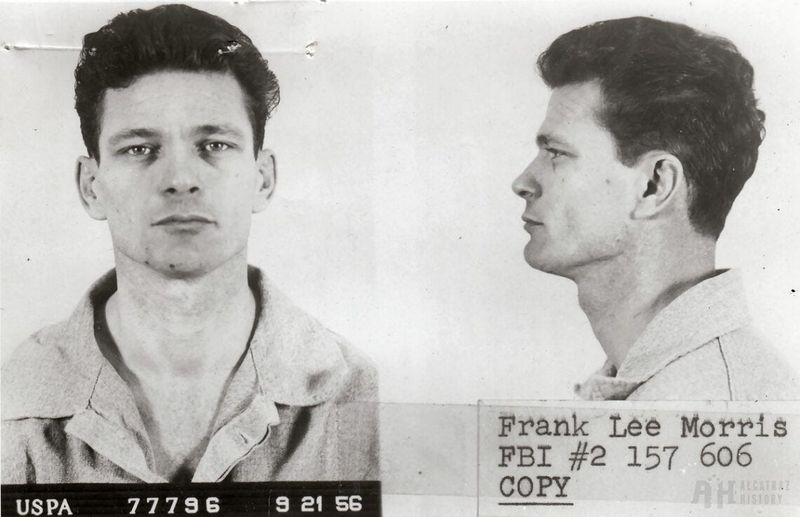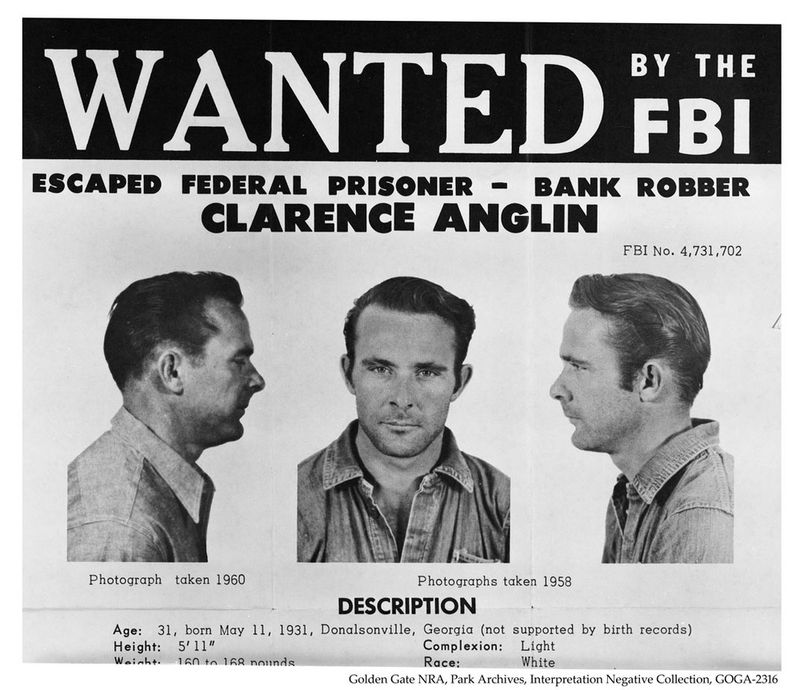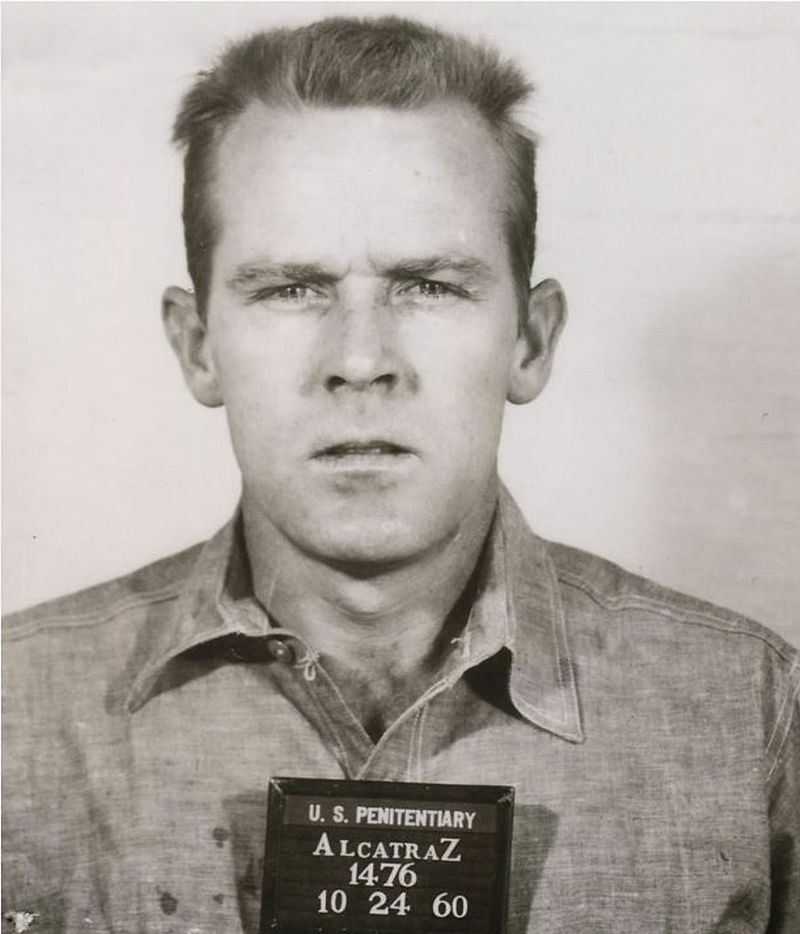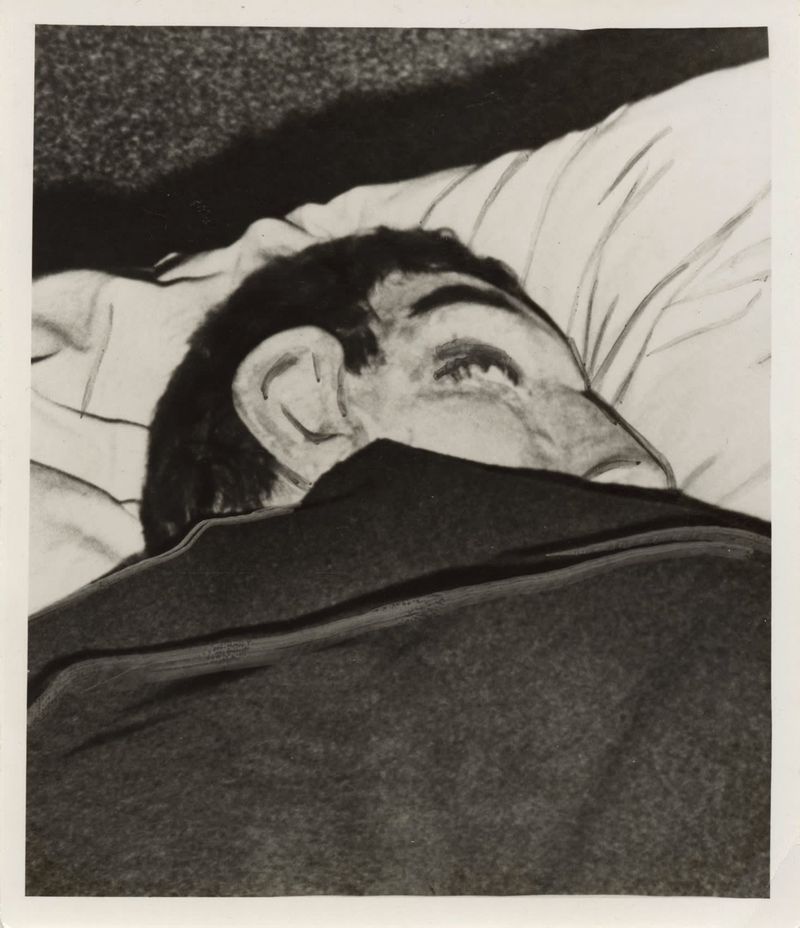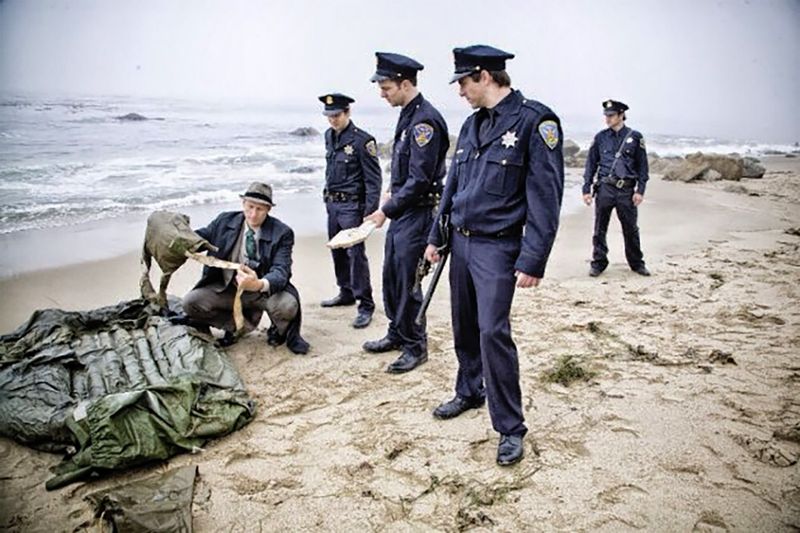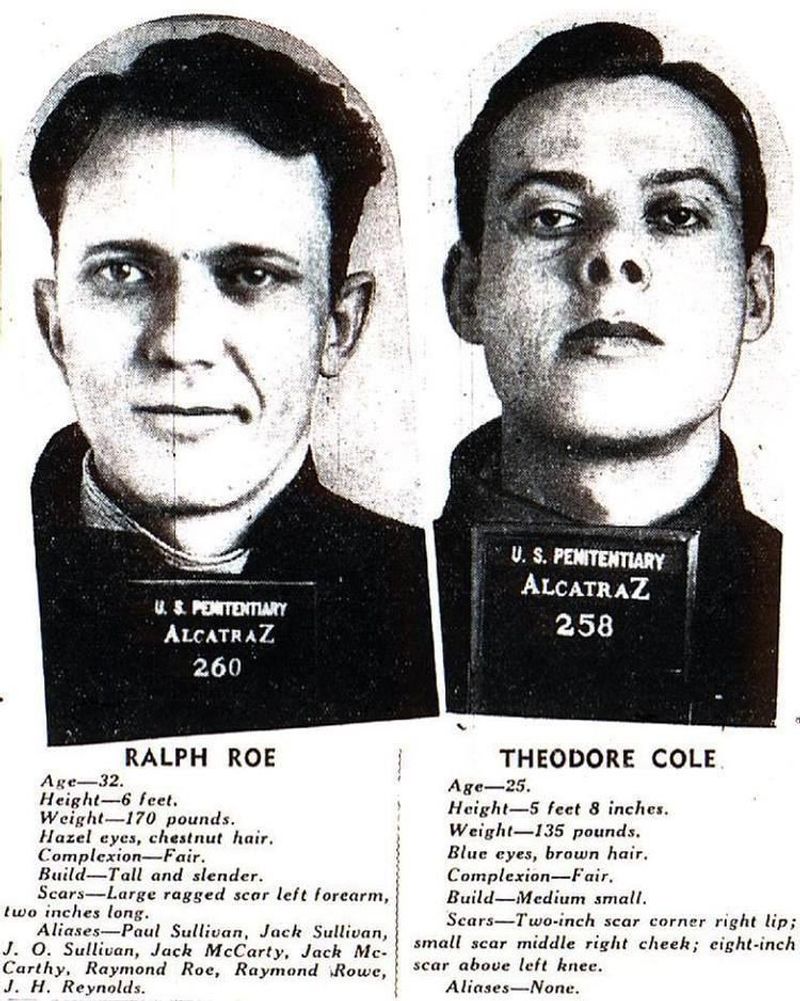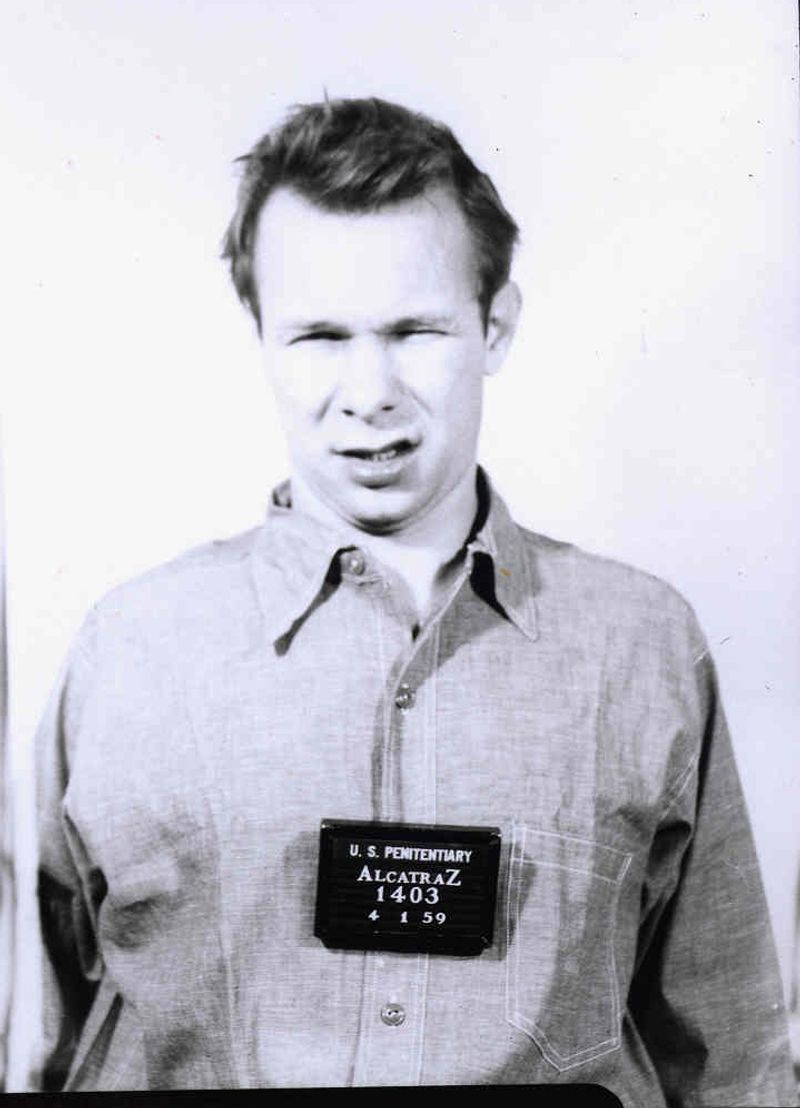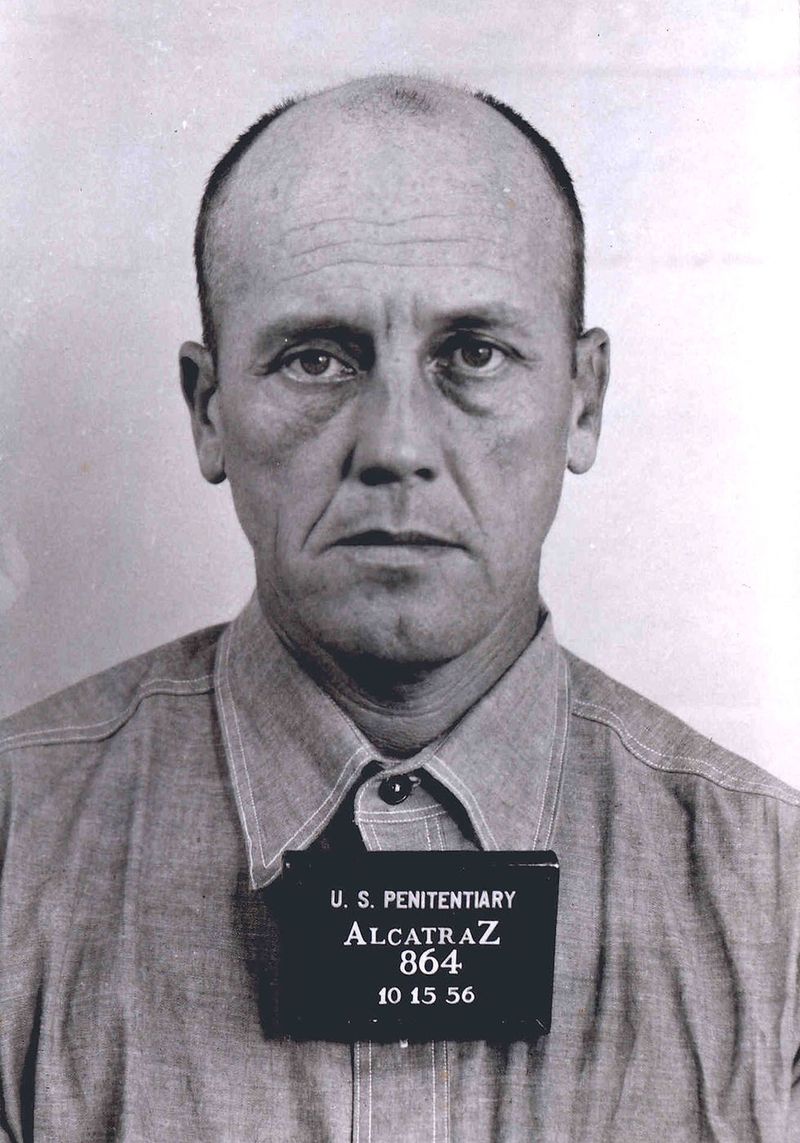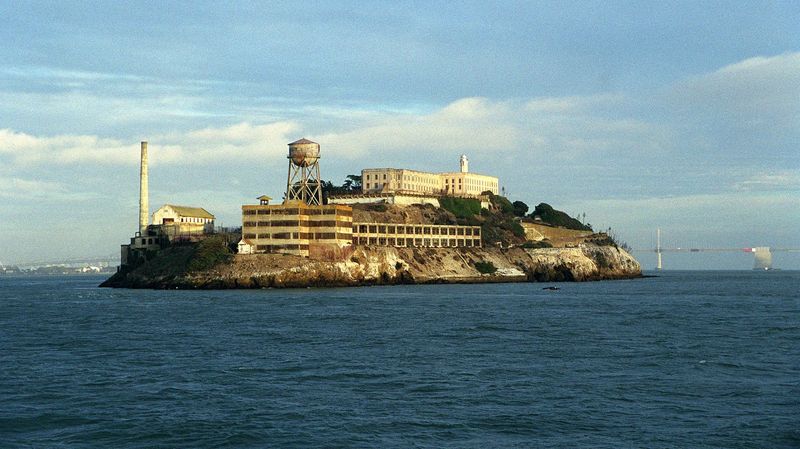Alcatraz, the infamous prison known for its unforgiving waters and ironclad security, was thought to be inescapable. Yet, throughout its history, some daring inmates challenged these odds.
The most notable escape occurred in 1962, when Frank Morris and the Anglin brothers vanished into the night, leaving behind only questions.
This blog explores this daring escape and other intriguing stories, revealing the secrets and mysteries of those who dared to dream of freedom beyond the fortress walls.
1. Frank Morris
With a mind as sharp as a razor, Frank Morris was known for his exceptional intellect and cunning nature. He was the alleged mastermind behind the famous 1962 escape from Alcatraz. Morris meticulously planned every detail, leaving nothing to chance. He was a seasoned criminal, having escaped from several other prisons before landing on Alcatraz. Known for his resourcefulness, Morris crafted tools from everyday items, turning them into means of escape. His daring plan became legendary, capturing the imagination of those who heard his story.
2. Clarence Anglin
Clarence Anglin, with his brother John, was part of the trio that pulled off the great escape from Alcatraz. Known for his creativity and ingenuity, Clarence used spoons and other makeshift tools to dig through the cell walls. He was instrumental in crafting lifelike dummy heads that fooled the guards, allowing the trio to make their move. His commitment to the escape was unwavering, and his teamwork with Morris and his brother was crucial. Together, they defied all odds, leaving behind a mystery that still intrigues.
3. John Anglin
John Anglin, Clarence’s devoted brother and co-conspirator, played a vital role in the infamous escape. His bond with Clarence was unbreakable, and together they worked tirelessly to turn their dream of freedom into reality. Known for his resilience, John was always ready to face challenges head-on. The brothers’ disappearance on June 11, 1962, remains one of Alcatraz’s greatest mysteries. Their fate is unknown, but their story is immortalized in history. The Anglin brothers’ tale is one of determination and unwavering brotherly loyalty.
4. The 1962 Escape: The Dummy Heads
The prisoners’ ingenious use of dummy heads was a key element in the 1962 escape. Crafted from soap, cardboard, and real human hair, these heads were lifelike enough to fool the guards during night checks. They placed them in their beds, giving the appearance of sleeping prisoners, while they worked on their escape. This clever deception allowed Morris and the Anglin brothers to buy precious time. Their daring move captured the imagination of the world and showcased their resourcefulness in the face of adversity.
5. The Mysterious Raft
The trio’s escape relied on a homemade raft, crafted from raincoats and other materials found within the prison. After slipping through the vents, they navigated the treacherous waters surrounding Alcatraz. Days later, a deflated raft was found on Angel Island, but the men were gone. Theories abound regarding their fate; some believe they drowned, while others think they made it to freedom. The raft’s discovery added a layer of mystique and intrigue, leaving the world to wonder about the escapees’ ultimate fate.
6. The 2013 Letter to the FBI
In 2013, a letter surfaced, claiming to be from John Anglin, stating that he and the other escapees had survived and were living secretly. The letter reignited interest in the case, leading the FBI to reopen their investigation. Though the results were inconclusive, the letter added another twist to an already captivating tale. Some see it as a hoax, while others believe it holds truth. This letter continues to fuel speculation and curiosity, inviting new theories about the escapees’ lives post-Alcatraz.
7. Theodore “Ted” Cole and Ralph Roe (1937 Escape)
Ted Cole and Ralph Roe attempted escape from Alcatraz in 1937 during a heavy fog, taking advantage of low visibility. Authorities quickly concluded they drowned, yet no bodies were ever found. Some believe they succeeded in their escape, living hidden lives elsewhere. Their story is often overshadowed by Morris and the Anglins, but it remains a significant part of Alcatraz’s history. The mystery surrounding their fate echoes the theme of hope and desperation, fueling the mythos of Alcatraz as an inescapable fortress.
8. John Paul Scott (1962)
John Paul Scott’s escape attempt stands out as he successfully swam from Alcatraz to the mainland. Captured shortly after reaching Fort Point, his endeavor proved that swimming from the island was possible. Despite being recaptured, Scott’s swim inspired future escape attempts and challenged the belief in Alcatraz’s infallibility. His daring act remains a testament to human endurance and willpower, highlighting the perpetual hope for freedom even in the most dire circumstances. Scott’s story reminds us that with determination, the impossible becomes possible.
9. Clyde Johnson (1958)
Clyde Johnson’s attempted escape in 1958 was bold and audacious. During a work detail, he saw an opportunity and made a run for the shoreline. Though ultimately caught, his attempt highlighted the vulnerabilities in Alcatraz’s security. Johnson’s story is a reminder that even the greatest fortresses have weak points. His near-success inspired other inmates to believe in the possibility of escape, planting seeds of doubt in the minds of those who considered Alcatraz unbreachable. Johnson’s legacy lives on as a symbol of defiance against oppression.
10. Alcatraz’s Closing in 1963
In 1963, Alcatraz closed its doors, officially due to high operating costs, but unofficially, many suspect the escapes played a role. The prison’s closure marked the end of an era, leaving behind echoes of its notorious past. Alcatraz’s legacy endures, fueled by tales of daring escapes and unsolved mysteries. Its closing symbolizes the shift in penal philosophy and the timeless human desire for freedom. As the sun set on Alcatraz, it rose on new possibilities, keeping the spirit of those who dared to dream alive.

